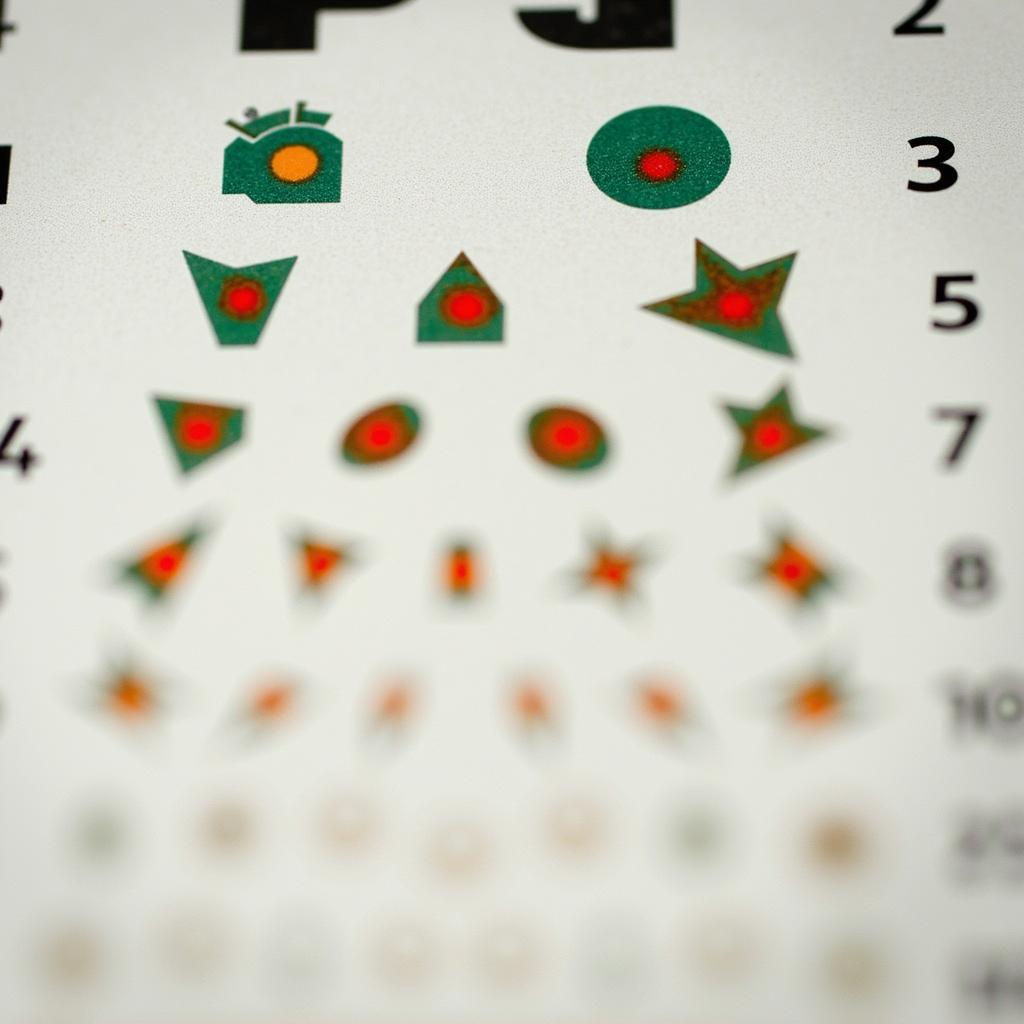Color blindness, the inability to distinguish certain colors, is often associated with men. But can only men be color blind? The answer, surprisingly, is no. While it’s significantly more common in men, women can also experience color blindness, albeit at a much lower rate. Let’s delve into the science behind this fascinating topic.
Understanding the Genetics of Color Vision
The most common type of color blindness, red-green color blindness, is inherited through a recessive gene on the X chromosome. Since men have one X and one Y chromosome (XY), inheriting just one affected X chromosome is enough to cause color blindness. Women, on the other hand, have two X chromosomes (XX). Therefore, they need to inherit the affected gene on both X chromosomes to be color blind. This explains the significant difference in prevalence between the sexes.
What are the Chances of a Woman Being Color Blind?
Because women need two copies of the recessive gene, the likelihood of a woman being color blind is much lower. Roughly 8% of men are affected by red-green color blindness, while less than 1% of women experience it. However, women are more likely to be carriers of the gene, meaning they can pass it on to their children even if they don’t experience color blindness themselves. Imagine a mother who is a carrier and a father who has normal color vision. Their sons would have a 50% chance of being color blind, while their daughters would have a 50% chance of being carriers like their mother.
Types of Color Blindness in Women
While red-green color blindness is the most common type in both men and women, other forms exist. These include blue-yellow color blindness and, in extremely rare cases, complete color blindness (monochromacy). The inheritance patterns for these types can vary. Do you know how much colored contact lenses cost? They can sometimes be used to help with color perception, though they don’t cure color blindness.
How is Color Blindness Diagnosed in Women?
Color blindness is typically diagnosed using Ishihara plates, which feature patterns of colored dots that reveal numbers or shapes to those with normal color vision. However, there are also other tests available that can assess the severity and type of color blindness more precisely. Early diagnosis, even in women, is important for managing potential challenges in certain professions and everyday life activities. You might be surprised to learn about how color vision differs in animals. For example, can hogs see color? And what about other animals, like pigs? Can pigs see color too? Their color perception is quite different from ours.
 Ishihara color blindness test plate
Ishihara color blindness test plate
Living with Color Blindness as a Woman
While color blindness might pose some challenges, many women with the condition adapt remarkably well. They may develop strategies to differentiate colors based on other visual cues, such as brightness or texture. It’s also important to remember that color blindness is not a disease but a variation in how the eye perceives color. Many people with color blindness lead fulfilling lives, even in fields that involve color, such as art or design. Perhaps you’re curious about the color vision of our canine companions. Can dogs see color in Bluey, the popular children’s show? This is an interesting question that many pet owners ponder. Or even, what color are lions eyes? Animal eye color is another fascinating topic related to color perception.
“Color blindness in women, while less common, can present unique challenges. It’s crucial for women to be aware of the possibility and seek testing if they suspect they might be affected,” says Dr. Amelia Carter, a leading ophthalmologist specializing in color vision disorders.
“Many women who are carriers of the color blindness gene are unaware of it. Genetic testing can be valuable for family planning, especially if the father is also color blind,” adds Dr. Carter.
Conclusion: Color Blindness is Not Exclusive to Men
While color blindness is significantly more prevalent in men due to the genetics involved, women can also inherit the condition. Understanding the inheritance patterns, diagnosis methods, and strategies for managing color blindness empowers both men and women to navigate the world of color with confidence. So, can only men be color blind? Definitely not.
FAQ
- What is the most common type of color blindness in women? Red-green color blindness.
- How is color blindness inherited in women? Through a recessive gene on the X chromosome, requiring two copies of the gene for the condition to manifest.
- Are women more likely to be carriers of the color blindness gene? Yes.
- What are Ishihara plates used for? Diagnosing color blindness.
- Is there a cure for color blindness? No, but there are strategies and tools to help manage the condition.
- How does color blindness affect daily life? It can impact tasks requiring color discrimination, like driving or choosing clothing.
- Where can I get tested for color blindness? An ophthalmologist or optometrist can perform color vision tests.
Have you considered how color vision differs in other species? Check out our other articles: can dogs see color in Bluey and what color are lions eyes.
Need support? Contact us 24/7: Phone: 0373298888, Email: [email protected]. Visit us at 86 Cau Giay, Hanoi.

